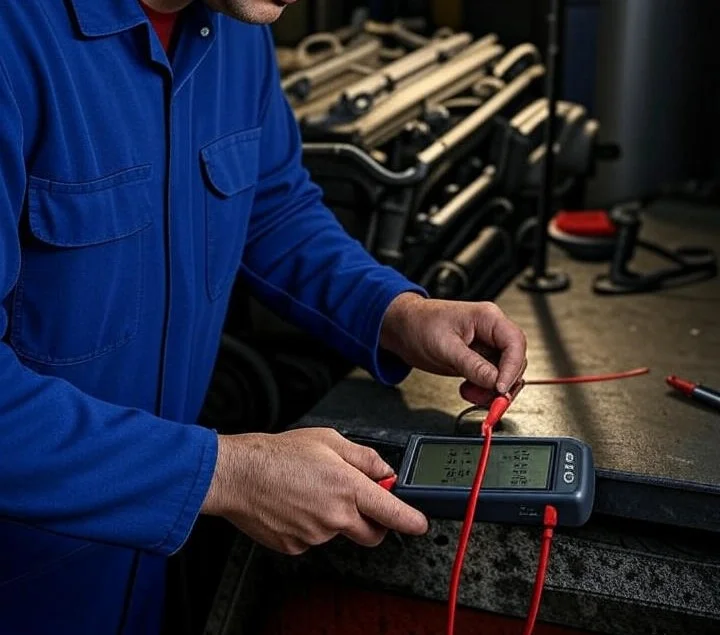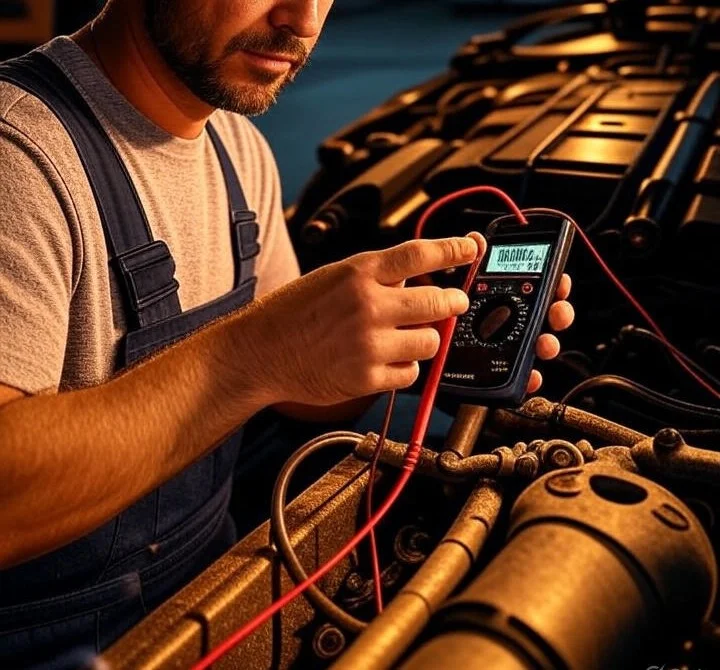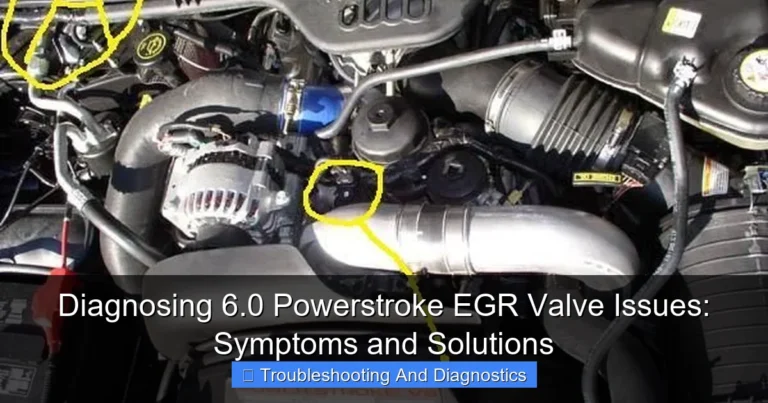Troubleshooting Your 6.0 Powerstroke Glow Plugs
Imagine this: you’re heading out on a cold morning, turn the key in your 6.0 Powerstroke, and…nothing. The engine cranks but refuses to start. This could be a sign of trouble with your 6.0 Powerstroke glow plugs. This post will help you understand these crucial components, troubleshoot common problems, and get your truck running smoothly again. You’ll learn how to identify faulty plugs, understand their role in cold-weather starting, and even explore preventative maintenance techniques. Let’s get started!
Understanding 6.0 Powerstroke Glow Plug Function
This section details the vital role of 6.0 Powerstroke glow plugs in the starting process of your diesel engine, especially in cold weather. We’ll discuss how they preheat the combustion chambers, enabling easier ignition. We’ll also cover different types of glow plugs available for your 6.0 Powerstroke.
Glow Plug Operation
- Glow plugs are electric heating elements that are embedded in the cylinder head.
These elements are designed to heat up rapidly, reaching extremely high temperatures within seconds. This heating process prepares the combustion chambers for efficient ignition by raising the temperature of the compressed air-fuel mixture, aiding in efficient fuel combustion. Without adequately heated chambers, the fuel may not ignite consistently, especially in colder temperatures.
- The glow plugs’ operation is controlled by the Powertrain Control Module (PCM).
The PCM monitors various engine parameters, such as coolant temperature and battery voltage, to determine the appropriate glow plug heating time. This allows for precise control and optimizes fuel efficiency and engine performance, ensuring your engine operates under ideal conditions even during harsh weather. The PCM’s role in managing the heating duration prevents excessive heat buildup, which could damage the glow plugs or engine components.
- The heating duration varies depending on factors such as ambient temperature and engine coolant temperature.
In extremely cold environments, the glow plugs may need to heat for a longer duration, sometimes up to several seconds before the engine starts. This is because the colder temperatures require more energy to initiate combustion efficiently. In warmer conditions, the glow plug heating time is significantly reduced, contributing to efficient cold-starting and minimized wear and tear.
Types of 6.0 Powerstroke Glow Plugs
- Standard Glow Plugs
These are the basic type used in many vehicles. They provide essential heating and are effective in most situations. However, their performance can degrade over time and they are less durable than the options below.
- Ceramic Glow Plugs
These are constructed using ceramic components, which offer improved durability and heat resistance compared to standard glow plugs. Ceramic materials can withstand higher operating temperatures, and provide better performance. Expect a longer service life and more consistent heating across a range of conditions.
- Quick-Heat Glow Plugs
Engineered for faster heating cycles, enabling quicker cold starts, particularly advantageous in very low temperatures. The quicker heating response also contributes to better fuel efficiency and reduced wear and tear on the engine’s starting system. While more expensive, the advantages in cold climates justify the expense.
Diagnosing Faulty 6.0 Powerstroke Glow Plugs
This section guides you through the process of identifying whether your glow plugs are the cause of your starting issues. We’ll look at common symptoms and diagnostic techniques, including the use of a multimeter to test glow plug functionality.
Symptoms of Faulty Glow Plugs
- Difficult cold starts
One of the most common indicators of a failing glow plug is difficulty starting the engine, especially in cold weather. This is because the faulty glow plug(s) fails to generate enough heat to properly preheat the combustion chamber. The engine may crank but not start, or take multiple attempts to ignite. This becomes more pronounced as temperatures drop.
- Rough running engine
Uneven combustion due to insufficient preheating can result in a rough-running engine. This is especially noticeable during cold operation when the engine is still warming up. Inconsistent firing can also contribute to poor fuel economy, increased emissions, and overall engine wear. Note that this symptom can be shared with other problems, so it’s important to address the issue comprehensively.
- Check Engine Light (CEL)
The CEL is frequently illuminated when a glow plug system malfunction is detected by the PCM. While not always definitive of a faulty glow plug, it often indicates a problem within the glow plug circuit. An OBD-II scan tool is needed to identify the specific code, which should be addressed and repaired immediately.
Testing Glow Plugs with a Multimeter
- Disconnect the glow plug from the harness.
- Set your multimeter to ohms.
- Place the leads on the glow plug terminals.
- Check the resistance reading; it should be within the manufacturer’s specified range. A reading outside this range suggests a faulty glow plug.
Note: Always consult your vehicle’s repair manual for the correct resistance values. Incorrectly interpreting resistance readings may lead to unnecessary component replacement.

Replacing Your 6.0 Powerstroke Glow Plugs
This section provides a step-by-step guide on how to replace your 6.0 Powerstroke glow plugs. We’ll cover necessary tools, safety precautions, and best practices for a successful replacement.
Tools and Materials
- Socket wrench set
The appropriate size socket wrench is crucial for removing and installing glow plugs efficiently. The size varies depending on the specific glow plug, so consult your vehicle’s manual.
- Glow plug socket
Using a specially designed glow plug socket will help prevent damage to the glow plugs during removal or installation. Standard sockets can easily strip the fragile tips of the glow plugs, leading to potential damage and additional repair expenses.
- Penetrating lubricant
Applying penetrating lubricant before attempting to remove the glow plugs can help loosen them, especially if they have been in place for an extended period. This lubricant assists in breaking any corrosion or seizing that may have occurred, reducing the risk of breaking or damaging the glow plugs during the process.
- New glow plugs
Purchase high-quality glow plugs that meet the specifications for your 6.0 Powerstroke engine. Using incorrect glow plugs can result in improper heating, damage to other engine components, or even engine failure.
Step-by-Step Replacement Process
- Disconnect the battery negative terminal.
- Locate and access the glow plugs (often requires removing other components).
- Apply penetrating lubricant to the glow plugs.
- Carefully remove the glow plugs using the proper socket and wrench.
- Clean the glow plug threads and seating areas.
- Install the new glow plugs, ensuring they are properly seated.
- Reconnect the battery negative terminal and start the engine.
Remember to consult your vehicle’s repair manual for specific instructions and torque specifications. Improper installation can lead to damage and future problems.
Preventative Maintenance for 6.0 Powerstroke Glow Plugs
This section focuses on preventing future issues by discussing preventative maintenance techniques, including regular inspections and timely replacements. We’ll discuss the importance of proactive maintenance to extend the life of your glow plugs and engine.
Regular Inspections
Regular visual inspections of the glow plug system can identify potential problems early, preventing them from escalating into major repair needs. This includes observing for any signs of corrosion, damage, or excessive wear on the glow plugs or their wiring. Timely intervention can prevent expensive repairs and ensure that your engine operates at optimal performance. An inspection should ideally be part of your routine maintenance checklist.
Importance of Timely Replacement
Replacing glow plugs at the recommended intervals helps avoid issues with cold starting and potential engine damage. As glow plugs age, their ability to generate sufficient heat diminishes. Continuing to operate with worn glow plugs significantly increases the risk of major mechanical problems. Therefore, regular replacements are a cost-effective measure to avoid more substantial repairs in the future.
Mythbusting: 6.0 Powerstroke Glow Plugs
Myth 1: Glow plugs only matter in freezing temperatures.
While their impact is more noticeable in cold weather, glow plugs assist with combustion even in moderate temperatures. Their role in efficient fuel combustion benefits engine performance year-round.
Myth 2: You can ignore a Check Engine Light related to the glow plug system.
Ignoring a CEL related to your glow plug system can lead to more serious engine problems. Addressing the issue promptly can prevent significant damage and costly repairs. A diagnostic scan should be performed to determine the exact cause of the light.
Myth 3: All 6.0 Powerstroke glow plugs are the same.
Different types of glow plugs are available with varying performance characteristics. Using incorrect or inferior plugs can negatively impact engine performance and longevity. Always use glow plugs specified by the manufacturer.
FAQ
What causes 6.0 Powerstroke glow plugs to fail?
Glow plug failure can be due to several factors, including age, wear and tear, corrosion, electrical shorts, or improper installation. High temperatures and vibration also contribute to their degradation over time.
How often should I replace my 6.0 Powerstroke glow plugs?
The recommended replacement interval varies depending on usage and environmental conditions, but it’s generally advisable to replace them every 50,000 to 100,000 miles or as recommended by your vehicle’s service schedule.
Can I drive my truck with a faulty 6.0 Powerstroke glow plug?
While you might be able to drive your truck with one or two faulty glow plugs, it is not recommended. The issue will likely worsen over time leading to more extensive and costly repairs. Cold starting will become increasingly difficult.
What are the signs of a failing glow plug control module?
Symptoms include difficulty starting in cold weather, a slow-to-start engine and illuminated Check Engine Light. The control module is responsible for managing the timing of the glow plugs, so problems here affect their operation.
How much does it cost to replace 6.0 Powerstroke glow plugs?
The cost can range based on labor costs and the type of glow plugs selected. Expect to pay anywhere between $200 and $500, depending on the shop and parts.
Final Thoughts
Understanding the function, diagnosis, and replacement of your 6.0 Powerstroke glow plugs is crucial for maintaining your truck’s reliability. Regular preventative maintenance, coupled with prompt attention to any warning signs, can save you significant time and money in the long run. By taking proactive steps to care for your glow plugs, you can ensure many years of trouble-free driving. Don’t hesitate to consult your vehicle’s service manual and a qualified mechanic for additional guidance.







